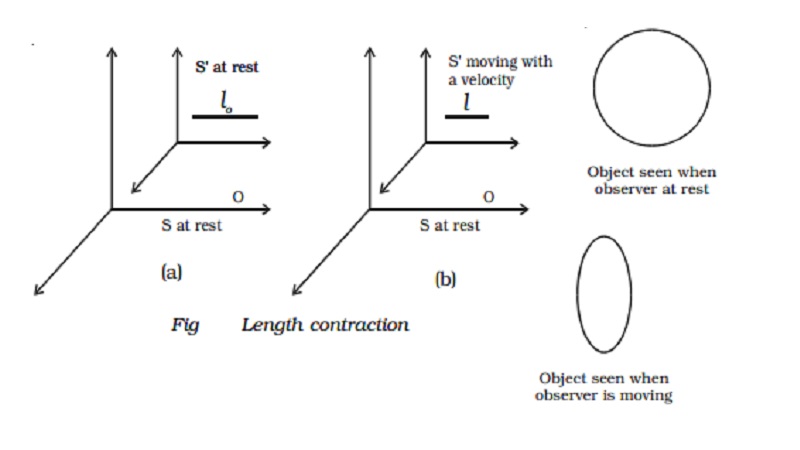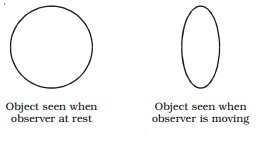Chapter: 11th 12th std standard Class Physics sciense Higher secondary school College Notes
Special theory of relativity

Special theory of relativity
It is a direct outcome of new realisations of
the nature of mass, length and time. It discards the absolute motion through
space and deals with objects or observers, that are moving with uniform
velocities relative to each other.
The two fundamental postulates of the special theory of relativity are :
i.
The laws of Physics are the same in all
inertial frames of reference.
ii.
The velocity of light in free space is a
constant in all the frames of reference.
1.Length
contraction
Consider two frames of references S and S′ to be initially at rest. A rod is placed in the frame of reference
S′ and an observer O is in S (Fig ). The
length of the rod in S′ as
measured by the observer in S is lo.

Now the
frame of reference S′ moves
with a velocity v along the positive
X-axis. Now, the length of the rod is measured as l by the observer in S. Then
l = lo rt(1-(v2/c2))
l<l0
Thus the length of the rod moving with a velocity v relative to the observer at rest is
contracted by a factor root(1-(v2/c2)) in the direction
of motion. This is
known as Lorentz - Fitzgerald contraction.
Example : A circular object will appear as an ellipse for a fast
moving observer as shown in Fig.
Time dilation
Consider two frames S and S′. Let S′ be
moving with a velocity v with respect
to S in the positive X-direction. Suppose a clock situated in the frame S′ at a position gives out signals at
an interval to.
If this interval is observed by an observer in frame S, then
the interval t recorded by him is
t = t0/root(1-(v2/c2))
i.e. t>t0
To a stationary observer in
S, time interval
appears to be lengthened by a factor 1/root(1-(v2/c2)) In
otherwords, a moving clock appears to be slowed down to a stationary observer.
This is known as time dilation.

Example : The clock in the moving space ships will appear to go
slower than the clocks on the earth.
3 Variation of mass with velocity
According to Newtonian mechanics, the mass of a body does not
change with velocity. But according to Einstein, the mass of the body changes
with velocity. Einstein established the relation between the mass of a body at
rest (mo) and the mass of
the same body moving with a velocity v
is,
m = m0/root(1-(v2/c2))
Example : Electrons accelerated in a particle accelerator,
cyclotron with a very high velocity acquire increased mass, exactly as
predicted by the above expression.
Related Topics